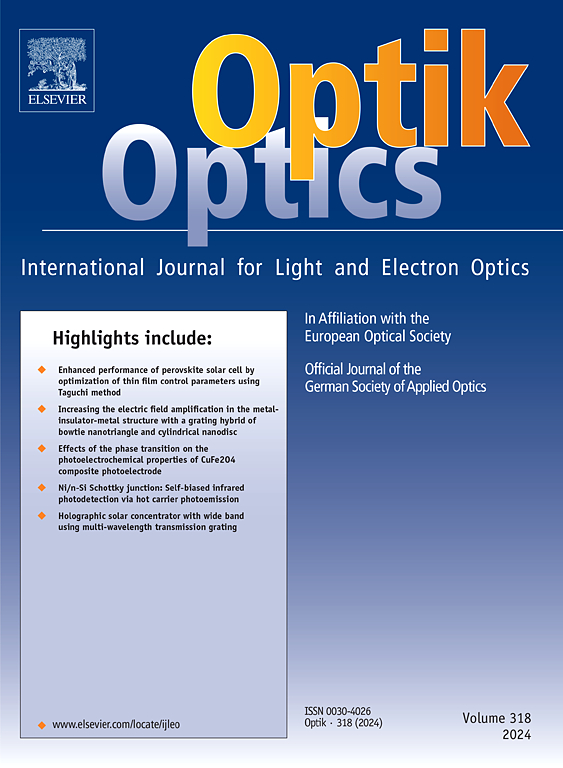Recent advances in graphene-based terahertz microstrip antennas: A technical review of substrate choices and emerging challenges
IF 3.1
3区 物理与天体物理
Q2 Engineering
引用次数: 0
Abstract
The Terahertz (THz) spectrum, bridging the microwave and infrared regions, holds immense promise for high-speed communications, imaging, and sensing. However, efficient THz antenna design remains a critical challenge due to issues like narrow bandwidth and signal attenuation. This review focuses on recent advances in graphene based microstrip antennas for THz applications, with a particular emphasis on substrate selection and associated design challenges. Graphene’s exceptional electrical conductivity, high electron mobility, and tunable surface impedance make it an ideal candidate for reconfigurable and miniaturized THz antennas. The study categorizes and compares both linearly and circularly polarized THz antenna designs, highlighting the impact of conductive and substrate materials on impedance, bandwidth, gain, and polarization characteristics. Polyimide and SiO₂ emerge as leading substrate materials due to their low loss, thermal stability, and compatibility with graphene. Circularly polarized antennas demonstrate promising axial ratio bandwidths and gains when employing graphene polyimide and graphene-SiO₂ combinations. Despite notable advancements, challenges such as limited gain-bandwidth tradeoffs, polarization purity, and fabrication complexity remain. The review concludes by identifying future research directions, including substrate engineering, reconfigurable architectures, and dual polarization techniques, to meet the growing demands of next-generation THz communication systems.
基于石墨烯的太赫兹微带天线的最新进展:衬底选择和新出现的挑战的技术回顾
太赫兹(THz)频谱,桥接微波和红外区域,在高速通信,成像和传感方面具有巨大的前景。然而,由于窄带宽和信号衰减等问题,高效的太赫兹天线设计仍然是一个关键挑战。本文综述了用于太赫兹应用的基于石墨烯的微带天线的最新进展,特别强调了衬底的选择和相关的设计挑战。石墨烯优异的导电性、高电子迁移率和可调的表面阻抗使其成为可重构和小型化太赫兹天线的理想候选材料。该研究对线性极化和圆极化太赫兹天线设计进行了分类和比较,强调了导电材料和衬底材料对阻抗、带宽、增益和极化特性的影响。聚酰亚胺和二氧化硅因其低损耗、热稳定性和与石墨烯的相容性而成为主要的衬底材料。当采用石墨烯聚酰亚胺和石墨烯- sio2组合时,圆极化天线显示出有希望的轴比带宽和增益。尽管取得了显著的进步,但诸如有限的增益-带宽权衡、极化纯度和制造复杂性等挑战仍然存在。总结了未来的研究方向,包括基板工程、可重构架构和双极化技术,以满足下一代太赫兹通信系统日益增长的需求。
本文章由计算机程序翻译,如有差异,请以英文原文为准。
求助全文
约1分钟内获得全文
求助全文
来源期刊

Optik
物理-光学
CiteScore
6.90
自引率
12.90%
发文量
1471
审稿时长
46 days
期刊介绍:
Optik publishes articles on all subjects related to light and electron optics and offers a survey on the state of research and technical development within the following fields:
Optics:
-Optics design, geometrical and beam optics, wave optics-
Optical and micro-optical components, diffractive optics, devices and systems-
Photoelectric and optoelectronic devices-
Optical properties of materials, nonlinear optics, wave propagation and transmission in homogeneous and inhomogeneous materials-
Information optics, image formation and processing, holographic techniques, microscopes and spectrometer techniques, and image analysis-
Optical testing and measuring techniques-
Optical communication and computing-
Physiological optics-
As well as other related topics.
 求助内容:
求助内容: 应助结果提醒方式:
应助结果提醒方式:


